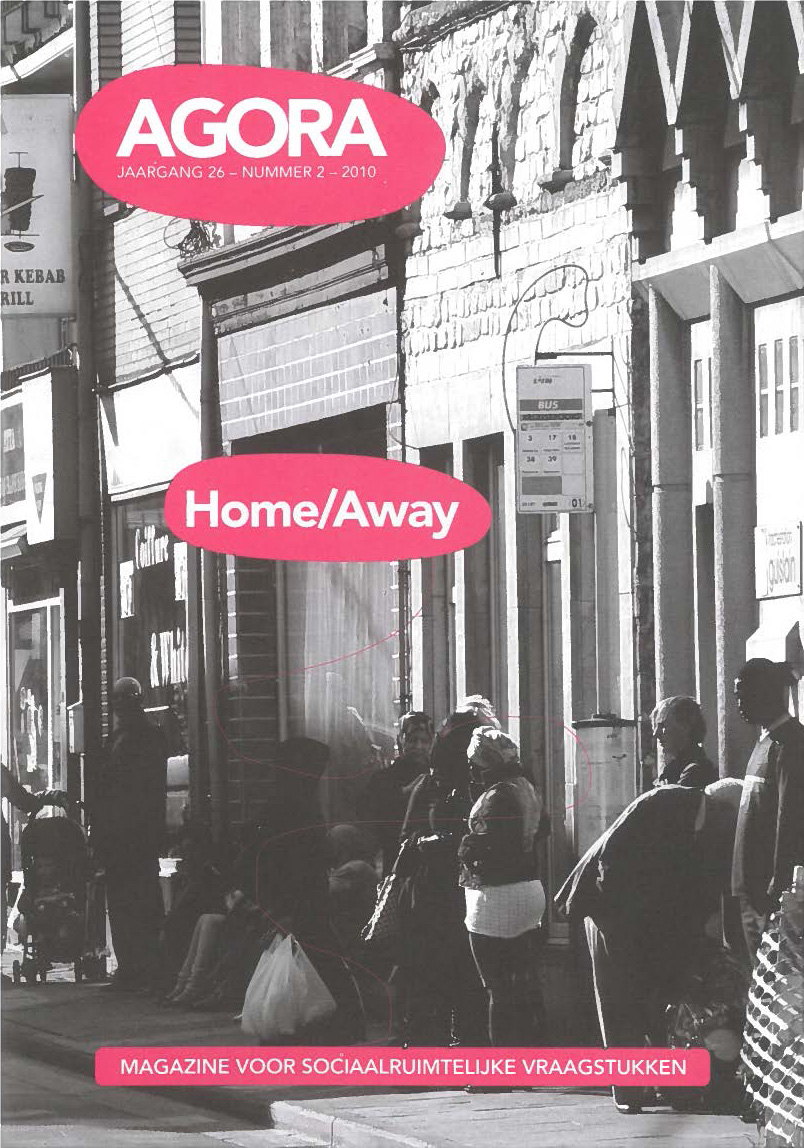Suburbanisatie op z’n Latijns-Amerikaans
DOI:
https://doi.org/10.21825/agora.v26i2.2456Samenvatting
Het aantal ommuurde enclaves in Latijns-Amerika neemt in een snel tempo toe. De oorzaak hiervan wordt doorgaans gezocht in de hoge criminaliteitscijfers. Maar de symbolische waarde van de contrasten tussen rijk en arm speelt eveneens een rol.Referenties
Borsdorf, A., Hidalgo, R. & R. Sánchez (2007) A New Model of Urban Deve- lopment in Latin America: The Gated Communities and Fenced Cities in the Metropolitan Areas of Santiago de Chile and Valparaíso. Cities 24, nr. 5, pp. 365-378.
Bourdieu, P. (1984) Distinction: A Social Critique of the Judgement of Taste. London: Routledge.
Caldeira, T. (2000) City of Walls: Crime, Segregation, and Citizenship in São Paulo. Berkeley: University of California Press.
Cohen, A. (1981) The Politics of Elite Culture: Explorations in the Dramaturgy of Power in a Modern African Society. Berkeley: University of California Press.
Hannerz, U. (1992) Cultural Complexity: Studies in the Social Organization of Meaning. New York: Columbia University Press.
Klaufus, C. (2010) Watching the City grow: Remittances and Sprawl in Inter- mediate Central American Cities. Environment and Urbanization 22, nr. 1, pp. 125-137.
Low, S. (2003) Behind the Gates: Life, Security, and the Pursuit of Happiness in Fortress America. New York: Routledge.
Rodgers, D. (2004) “Disembedding” the City: Crime, Insecurity and Spatial Organization in Managua, Nicaragua. Environment and Urbanization 16, nr. 2, pp. 113-123.
Bourdieu, P. (1984) Distinction: A Social Critique of the Judgement of Taste. London: Routledge.
Caldeira, T. (2000) City of Walls: Crime, Segregation, and Citizenship in São Paulo. Berkeley: University of California Press.
Cohen, A. (1981) The Politics of Elite Culture: Explorations in the Dramaturgy of Power in a Modern African Society. Berkeley: University of California Press.
Hannerz, U. (1992) Cultural Complexity: Studies in the Social Organization of Meaning. New York: Columbia University Press.
Klaufus, C. (2010) Watching the City grow: Remittances and Sprawl in Inter- mediate Central American Cities. Environment and Urbanization 22, nr. 1, pp. 125-137.
Low, S. (2003) Behind the Gates: Life, Security, and the Pursuit of Happiness in Fortress America. New York: Routledge.
Rodgers, D. (2004) “Disembedding” the City: Crime, Insecurity and Spatial Organization in Managua, Nicaragua. Environment and Urbanization 16, nr. 2, pp. 113-123.
##submission.downloads##
Gepubliceerd
2010-05-01
Nummer
Sectie
Varia
Licentie
AGORA maakt gebruik van de CC Attribution-NonCommercial-NoDerivatives licentie. Ongeveer 6 maanden na publicatie in print, worden de artikels beschikbaar gemaakt in ons Open Access-archief.


